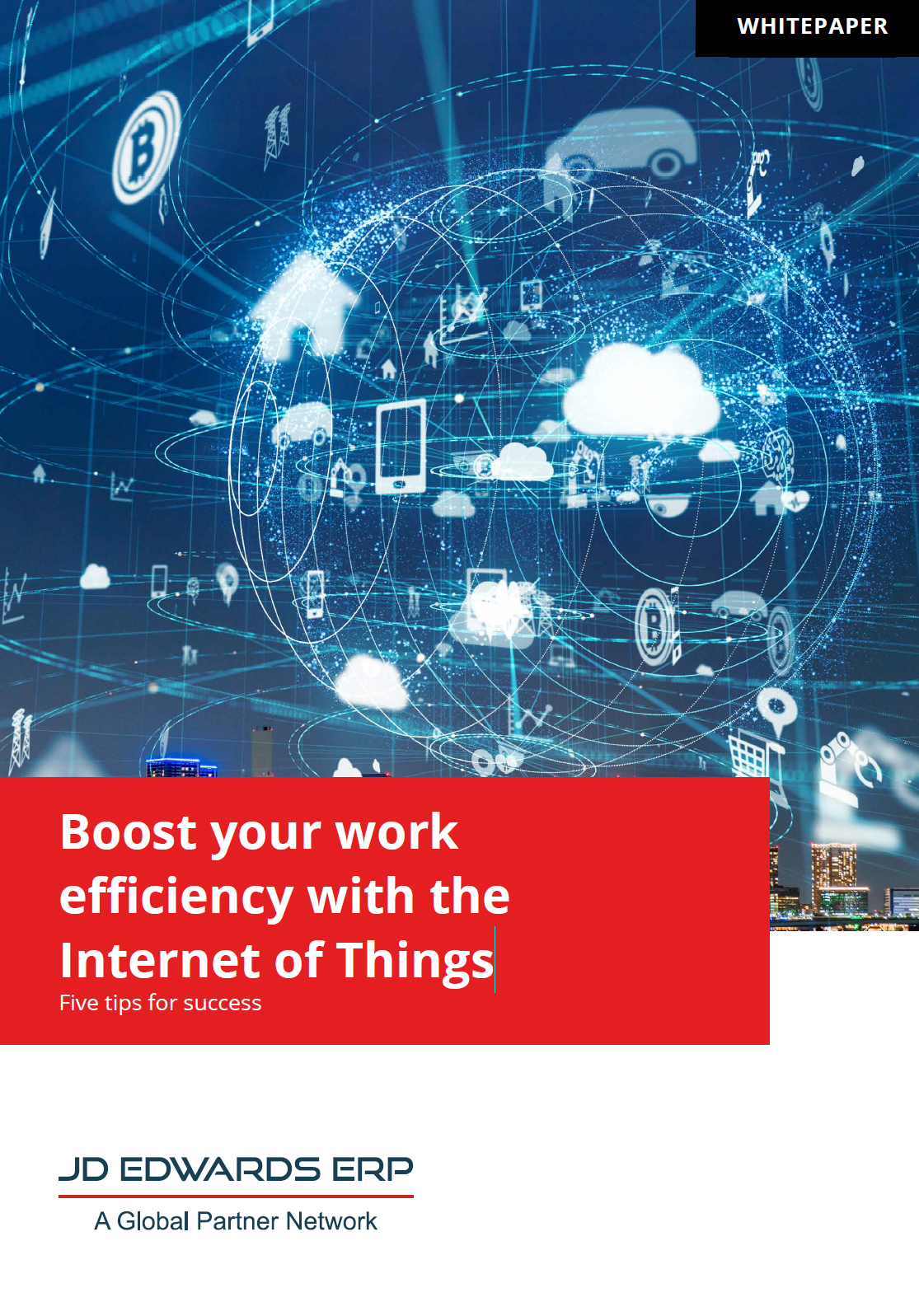Creating a Supplier Portal with JD Edwards and Oracle Content and Experience
Creating a Supplier Portal with JD Edwards and Oracle Content and Experience
Author: Mark Paterson, Director of Product Management, Oracle Content and Experience
The JD Edwards EnterpriseOne integration with Oracle Content and Experience offers you the following benefits out of the box:
- Store documents in the cloud
- In-context transaction and internal operational collaboration
- Collaborate with external customers, suppliers or partners
- Reduce storage costs
Beyond this however, with Oracle Platform-as-a-Service (PaaS), a business can create its own custom applications. An example of such a custom application might be a supplier portal.
Does your procurement process rely on manual coordination and multiple communication channels? For many businesses, the procurement process involves manual coordination that can be costly in both time and labor:
- Buyers must contact the provider to determine the status of a purchase order, often more than once
- Buyers must manually update purchase order status as status changes
- Suppliers are often unaware of pending orders which creates delays
- Suppliers submit invoices in different ways that often require manual re-entry of order information
- Communicating through phone calls and email can slow the process
A supplier portal built using JD Edwards orchestrations and Oracle PaaS Services (Oracle Content and Experience and Oracle Integration Cloud) could automate many of the steps in the procurement process to provide an efficient, integrated process flow.
This article explores how such a supplier portal could be created using the following services:
| Service | Description |
| Oracle Content and Experience(OCE) | Designated folders within OCE can be used as the document repository for purchase orders, invoices and receipts for each supplier.The OCE site builder can be used to design and deploy a Supplier Portal front end that Suppliers need to sign in to, to get real-time access to review and acknowledge purchase orders, submit invoices, and track their payment status. |
| JD Edwards EnterpriseOne (JDE) | The JD Edwards Orchestrator can be used to augment the JDE order management system. Custom orchestrations can be used to route purchase orders to the correct supplier’s folder within OCE, receive invoices, and manage notifications and status updates on JDE transactions. |
| Oracle Process Cloud Service | Oracle Process Cloud Service can be used to develop workflow applications to coordinate the actions between order management, the document repository, and the portal. |
| Oracle Integration Cloud Service | Oracle Integration Cloud Service’s JDE Adapter can provide the Oracle Process Cloud Service with connectivity to and from the JDE system |
The diagram below shows a possible integration architecture between JD Edwards EnterpriseOne, Oracle Integration Cloud, and Oracle Content and Experience for creating a supplier portal that automates many of the steps in the purchase order fulfillment process.
Figure 1 – Sample Supplier Portal Architecture

Imagine the following personas using such a portal…
| Persona | Description |
| Morgan.Zu | Morgan is the buyer and accounts payable person in the organization and is the principal user in JD Edwards. |
| Joshua.Baker | Joshua is the supplier working for Dakota Farms and is the principal user of the supplier portal website. |
Let’s examine the procurement process user flows Morgan and Joshua are regularly part of:
- Morgan creates the purchase order
- Joshua ships the order
- Morgan receives the order
- Joshua submits the invoice
Buyer Creates the Purchase Order
In this step, the Morgan issues a purchase order (PO) in JD Edwards and Joshua is notified so he can review and acknowledge that Dakota Farms can fulfill the order.
This sequence includes the following actions:
- A JDE print orchestration creates a PDF version of the purchase order and routes it to the appropriate folder in Oracle Content and Experience.
- Adding the purchase order to the folder updates the list of buyer purchase orders on the supplier website and initiates a process in Oracle Process Cloud that notifies Joshua and sets pertinent metadata for the file.
- Joshua can use the portal to acknowledge receipt of the purchase order which ties back in to the Oracle Process Cloud to notify the buyer and update the purchase order status in JD Edwards.
Figure 2 – Submit Purchase Order with Supplier Acknowledgement

Supplier Ships the Order
In this step, the Joshua ships the order to the buyer and submits invoice.
This sequence includes the following actions:
- Joshua uses the portal to indicate that the order has been shipped. This starts a process in Oracle Process Cloud that notifies the buyer, sets pertinent metadata for the file, and updates the purchase order status in JD Edwards.
- As part of this same flow Joshua is asked to upload the invoice associated with the purchase order. The invoice gets stored in the appropriate folder in Oracle Content and Experience, which starts an invoice approval process.
Figure 3 – Supplier Ships the Order

Buyer Receives the Order
In this step, Morgan receives the order and Joshua is notified of receipt.
This sequence includes the following actions:
- Morgan creates a receipt of goods.
- A JDE print orchestration creates a PDF version of the receipt and stores it in the appropriate folder in Oracle Content and Experience Cloud.
- Adding a receipt to the folder starts a process in Oracle Process Cloud Service that notifies Joshua and sets pertinent metadata for the file.
Figure 4 – Buyer Receives the Order

Supplier Submits the Invoice
In this step, the submitted invoice is processed.
This sequence includes the following actions:
- In previous sequence when Joshua shipped the order he also uploaded an invoice. The invoice is stored in the appropriate folder in Oracle Content and Experience.
- When the invoice is added to the folder, pertinent metadata is applied to the file and a process is started in Oracle Process Cloud that notifies the approver, typically accounts payable.
- Accounts payable reviews and approves the invoice which triggers Oracle Process Cloud to send invoice data for the creation of the needed voucher to JD Edwards.
- In addition, the Oracle Process Cloud notifies Joshua that the invoice has been approved for payment.
Figure 5 – Supplier Submits the Invoice

Description of “Figure – Supplier Submits the Invoice”
Your procurement processes may not match up with these exactly but hopefully they help illustrate what is possible. The benefits of Procure to Pay Process Automation include the following:
- Friction is removed, process is simplified
- Buyer receives orders faster
- Supplier receives payment faster
- Real time buyer/supplier collaboration
- Buyer Supplier relationship improves
- Reduced process costs
- Increased transaction accuracy
A supplier portal is just one example of a custom application that becomes possible using Oracle Platform-as-a-Service (PaaS). These same ideas could be re-imagined as a partner portal, a customer portal, a contracts portal, …
Blogs & News
Events
Composable Architecture, What is it and why does your business need it ?
Composable Architecture focuses on the idea of a “building block” system, where components are designed and developed independently but can be combined to create a larger system that is flexible and scalable. Composable architecture is advantageous for developers and organizations because it allows for rapid development, cost savings, and greater flexibility. Additionally, it enables developers […]
Arantys for Commodity Trade Companies
Read a guide to discover how Commodity Trade companies can tackle their most significant business challenges this year. Learn how to integrate your processes and increase your margins with Arantys. An ERP & CTRM solution, fully build on Oracle JD Edwards. In the following download, we will tell you more about:
JD Edwards Opinion Poll
JD Edwards Opinion Poll Help JD Edwards by filling in our Opinion Poll! Bring the platform to a higher level. With your input, it is possible to fit the needs of JD Edwards users even better. Express your opinion on the current platform and help us with the development of the platform in the future. […]
Upgrading the JD Edwards E1Local Oracle Database
JD Edwards E1Local Oracle Database from 12c to 19c Oracle published a document in June 2020 outlining procedures required to Upgrade Oracle E1Local Oracle Database on the Deployment server. The version of Oracle E1Local Database produced by the Oracle JD Edwards EnterpriseOne Application update is E1Local OEE 12.1.0.2 (12c). Oracle E1 Local OEE 12.1.0.2 is […]
Release 22 and Your Digital Transformation
The impact of JD Edwards EnterpriseOne Release 22 on Your Digital Transformation Release 22 has all the new apps and tools available in JD Edwards EnterpriseOne. The release was debuted in October 2021. It has an influence on your digital transformation. Syntax tells you more about the three main umbrellas: automation, optimization, and transformation. Furthermore, […]

